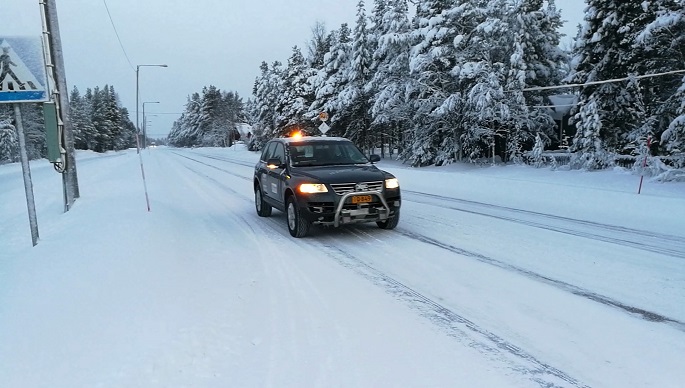VTT develops robot car to challenge snow, ice
Published : 16 Dec 2017, 01:53
Martti, the robot car developed by VTT Technical Research Centre of Finland, is the first automated car to have driven fully autonomously on a real snow-covered road.
On top of that, it also succeeded in making a new speed record of 40 km/h on the Aurora E8 intelligent road in Muonio, probably setting a new unofficial world record as well, said a VTT press release.
Martti is a research vehicle developed on the chassis of Volkswagen Touareg. Like its counterpart Marilyn, it is equipped with cameras, antennas, sensors and laser scanners. The number and placement of sensors differs between the vehicles. For example, Martti has three laser scanners sensing the environment only in front of the car, whereas its spouse Marilyn has two scanners looking forwards and one looking backwards.
"When in spring 2017 we, the researchers, taught the automated car Marilyn to drive, this autumn it has been teaching us on how to make Martti such that it can get along with its spouse, and follow GPS and positioning information on its route. Martti has been designed for demanding weather conditions and Marilyn shines as the queen of urban areas," said project manager Matti Kutila from VTT's RobotCar Crew, describing the couple.
On the intelligent road of Muonio, Martti was also given intensive training. "It clearly has a very determined mindset, and after a persistent 24-hour training session, it started functioning. Earlier, Marilyn required a lot more work, because its control software was created from scratch. Martti uses the same software, which did no longer require more than minor adjustments," said Ari Virtanen, who was in charge of building the car and its equipment.
Martti made its speed record, when it was allowed to pick up speed after having felt its way for a little while. "It probably also made a new world record in fully automated driving, making 40 km/h in a snowfall on snow-covered terrain without lane markings. It could have had even more speed, but in test driving it is programmed not to exceed the limit of 40 km/h," Kutila pointed out. The amazing drive was implemented by Pasi Pyykönen, Ari Virtanen and Rainer Täppinen.
The next step for VTT's autonomous cars will be changing the wavelengths of the optical components, increasing the resolution of the radar, and building more intelligence in the software monitoring the capabilities of the sensors. These are intended to enhance the vehicle's functioning capacity step by step also on slippery road surfaces, where concealed edge of the road or fog may obstruct visibility.


